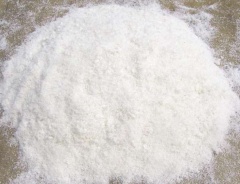Desiccated coconut
| Infobox on Desiccated coconut | |
|---|---|
| Example of Desiccated coconut |  |
| Facts | |
| Origin | - |
| Stowage factor (in m3/t) | - |
| Humidity / moisture | - |
| Ventilation | - |
| Risk factors | See text |
Desiccated coconut
Description / Application / Shipment / Storage / Risk factors
Coconut
Found throughout the tropic and subtropic area, the coconut is known for its great versatility as seen in the many domestic, commercial, and industrial uses of its different parts. Coconuts are part of the daily diet of many people. Coconuts are different from any other fruits because they contain a large quantity of "water" and when immature they are known as tender-nuts or jelly-nuts and may be harvested for drinking. When mature they still contain some water and can be used as seednuts or processed to give oil from the kernel, charcoal from the hard shell and coir from the fibrous husk. The endosperm is initially in its nuclear phase suspended within the coconut water. As development continues, cellular layers of endosperm deposit along the walls of the coconut, becoming the edible coconut "flesh". When dried, the coconut flesh is called copra. The oil and milk derived from it are commonly used in cooking and frying; Coconut Oil is also widely used in soaps and cosmetics. The clear liquid coconut water within is a refreshing drink. The husks and leaves can be used as material to make a variety of products for furnishing and decorating. It also has cultural and religious significance in many societies that use it.
Desiccated Coconut
The dried, finely shredded flesh of the coconut, sometimes sweetened. Should essentially be considered "clean" cargo. May be stowed with tea but not with copra or copra products, cargoes sensitive to oil contamination, nor with cargo holding vermin/insects such as sago meal and rice.
Good quality product is often packed in tin lined cases otherwise the norm is in multiwall paper bags.
The various parts of the coconut have a number of culinary uses. The seed provides oil for frying, cooking, and making margarine. The white, fleshy part of the seed, the coconut meat, is used fresh or dried in cooking, especially in confections and desserts such as macaroons. Desiccated coconut or coconut milk made from it is frequently added to curries and other savory dishes. Coconut flour has also been developed for use in baking, to combat malnutrition. Coconut chips have been sold in the tourist regions of Hawaii and the Caribbean. Coconut butter is often used to describe solidified coconut oil, but has also been adopted as a name by certain specialty products made of coconut milk solids or puréed coconut meat and oil. Dried coconut is also used as the filling for many candy bars.











